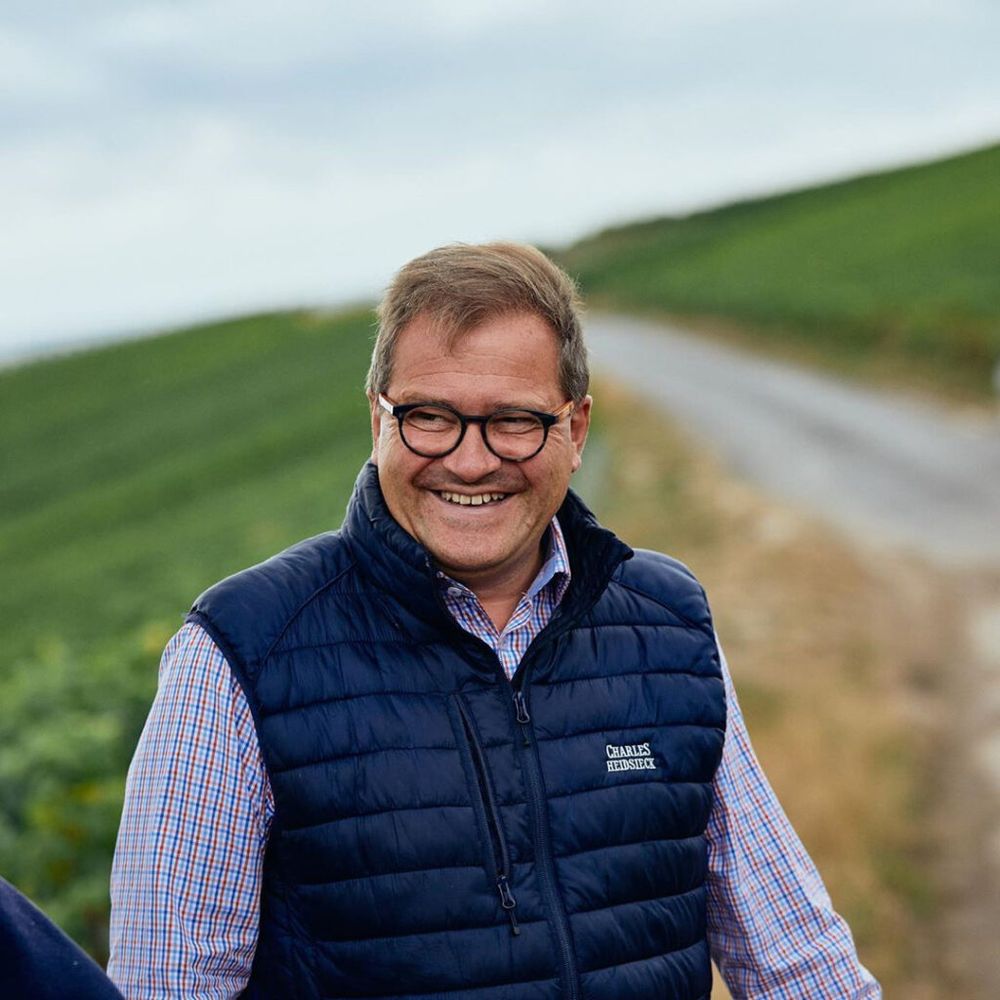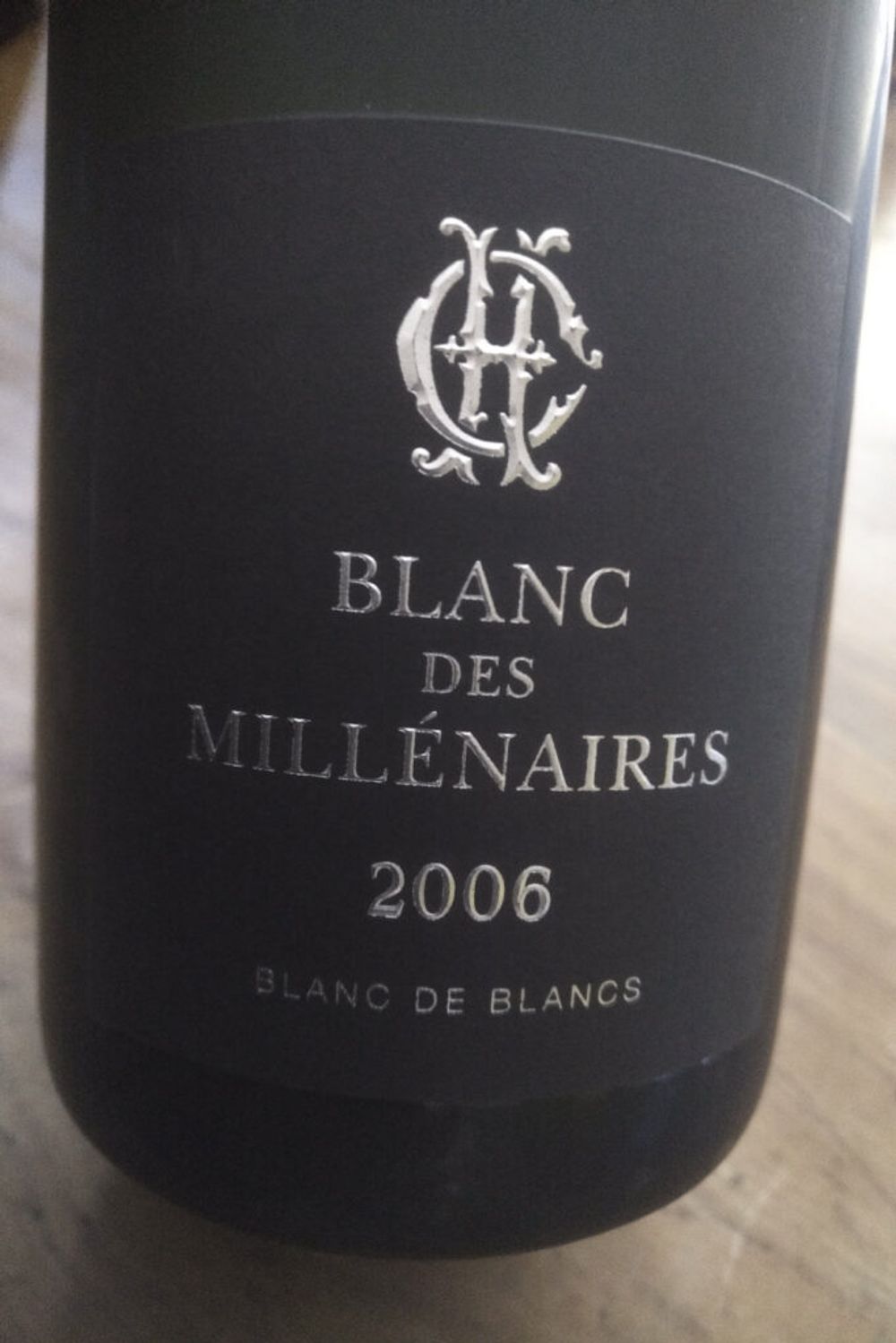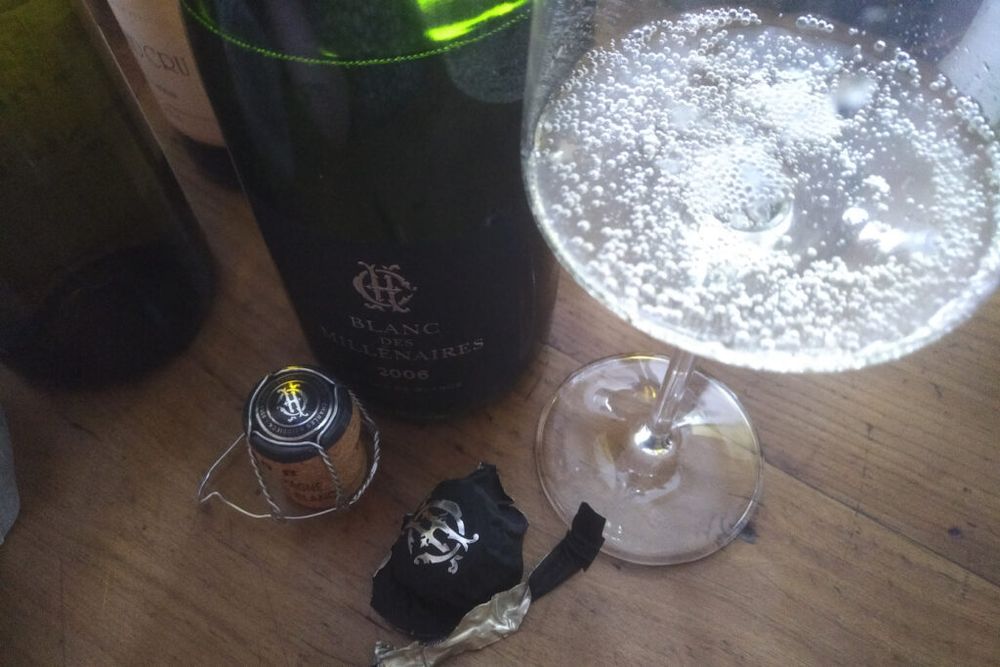“In 2006, you had this feeling you were drinking bonbons. It was so round, so balanced, an endless feeling of pleasure, and I have the same emotion when I taste the 2006 now, this super-approachable profile,” Cyril Brun says.
Charles Heidsieck Blanc des Millénaires 2006 is only the 6th vintage of this wine to be released. Like its predecessors, it is a love letter to the Côte des Blancs. Cyril Brun, cellar master, and Stephen Leroux, managing director of Charles Heidsieck, co-presented the new release on Zoom on a sunny Thursday afternoon.
Speaking just after all the alcoholic fermentations of the 2020 harvest finished at the house, Brun remarked that the 2006 harvest had only begun in mid-September: “Time is truly accelerating, and global warming is here,” he said. “This is the earliest ever record of picking, more than one month before what was supposed to be the standard in Champagne.” He hailed flexibility and a changing focus – and something that characterises this new prestige cuvée, too – but more of that in a moment.
Each of the five crus plays a key role
Like all the previously released Blanc des Millénaries vintages 1983, 1985, 1990, 1995 and 2004, the 2006 vintage is neatly composed from one fifth each of the best crus, or villages, of the chalky Côte des Blancs: “Cramant, Avize, Oger, Mesnil-sur-Oger and finally Vertus,” Brun recounted, “We have respected that selection from the very beginning, and we are still using 20% of every village.”

Cyril Brun
For Brun, Blanc des Millénaries is “reflecting the Côte des Blancs as a global profile. We have picked some pixels in a picture, a kind of information, and that creates the identity of Blanc des Millénaries. We feel that each and every cru has its own strong identity.”
He was then more than eloquent in outlining each of them: “Oger is the most typical of the Côte des Blancs, it is a Chardonnay that sometimes behaves like a Pinot Noir; we tend to feel and taste a kind of fleshiness, a body and texture that you are not supposed to find in a Chardonnay. Oger really brings backbone in terms of creating the rich, opulent style. Avize is probably the most exotic and tropical profile of the Côte des Blancs, with extra ageing you can have a mango, passion fruit, lemongrass profile, when it is older, it brings this kind of exoticism. Le Mesnil brings this kind of saltiness, a very chalky profile, it is almost aggressive – in a good way – with its freshness of the soil and subsoil. It really works like a sponge in terms of encapsulating terroir, it brings a smoky profile and will help the wine to age for many years.”
“Cramant will have a lighter contribution, it is really refined, with a kind of citrus, a kind of wildflower delicacy. On paper it is really most discreet, but if you don’t have Cramant you really don’t have Blanc des Millénaries. Vertus is a different category, among all the villages it is the one that is the largest spread in terms of surface, this means that if you are just choosing the grapes from the north, it is like Mesnil, and in the south it will taste a little like Côte de Sézanne.” For Brun and Leroux, this equal combination of these elements expresses the essence of the Côte des Blancs.
Brun then remarked how in the wine’s youth the “footprint” of the villages was stronger and with time, the “footprint” of the vintage started taking over. For Brun, the 2006 vintage is “really round, abundant, really approachable.” He remembered tasting the base wines from 2006 and how unusual they were (even if he did this at a different cellar, having joined Charles Heidsieck in 2015): “In 2006, you had this feeling you were drinking bonbons [=sweets]. It was so round, so balanced, an endless feeling of pleasure, and I have the same emotion when I taste the 2006 now, this super-approachable profile.”

How bitterness plays a part in the finished blend
Speaking about the finished wine, disgorged in February 2019 with a dosage of 9g/l, he said: “You can really feel this chalky style, this minerality. It is interesting to see how this wine is going to evolve, it is still very young, this rich, buttery, creamy profile.”
In order to represent this neat, equal cocktail of noted Côte des Blancs origins, all the wines were fermented in stainless steel and all went through full malo-lactic fermentation. “There is nothing really fancy in terms of winemaking, it is just the blending,” Brun noted. “We know that these equal components are going to reveal themselves more or less fast in each vintage.” He also said that “if you drink your glass over 20 minutes, you will observe a ping pong between the fruity side of the vintage and the more austere side of the Côte des Blancs.”
As Brun and Leroux popped their bottle open, we all tasted. And yes, this wine is rich and opulent, but also wonderfully salty. I remarked on a certain pleasant, but distinctly mouth-watering bitterness and Brun’s reply was telling: “I am very interested in bitterness,” he said. “Especially in Champagne, because it could be an answer to global warming, because we encounter acidity that is declining every year. Playing with bitterness and acidity will give a second life to acidity, even with low to medium acidity, and will keep the freshness a little longer. I have reintroduced this notion of bitterness because it can be a sort of answer to the decreasing acidity.”
Brun explained further: “Bitterness is related to the date of picking and the phenolic ripeness at picking. Bitterness will also have a role to play in what you do with the taille [=the last press fraction]. I think that especially the tailles from Chardonnay if they are very well worked can play a role in the blend.”
Brun said that it had been the hot vintage of 2003 that had turned his thoughts to the subject: “We are rediscovering the role of phenolics. We have to be honest that they started registering in 2003. We started paying attention again, because [before] they were almost unmeasurable, and almost nobody was assessing berries to set the date of picking. To be honest, I started to realise what the future role of bitterness could be when I started tasting berries. Most of the time you taste juice, but it is more interesting to taste berries, because you can bite into seeds you can chew the skin, you feel the motion when you taste the berries.”

Tasting Charles Heidsieck Blanc des Millénaires 2006
Charles Heidsieck Blanc des Millénaires 2006, Blanc de Blancs, 12%
The first whiff is of buttery, smooth mellowness and rich, buttery shortbread. With more air, there is this serene, gentle but profound fruit of ripe Golden Pearmain apple. The palate is utterly mellow with more of that smooth, rounded, cashmere-like texture and fine mousse. But, despite this rounded richness, the actual body remains sinuous, slender, bright. It is vivid with enlivening, soothing freshness and the cool chalky depth of the Côte des Blancs.
It is the very austerity of these soils that stands in beautiful and compelling contrast to the buttery richness – this pulls the most glorious trick. On the finish there is a fine, textured seaweed saltiness paired with an incipient, mouth-watering bitterness that draws you in. It makes the next sip compulsive. With air and temperature, the saline tang gets ever more pronounced. This is dangerously delicious and far too easy to drink.
The wine is distributed by Liberty and will be available in the UK shortly at an RRP of £170-180
































